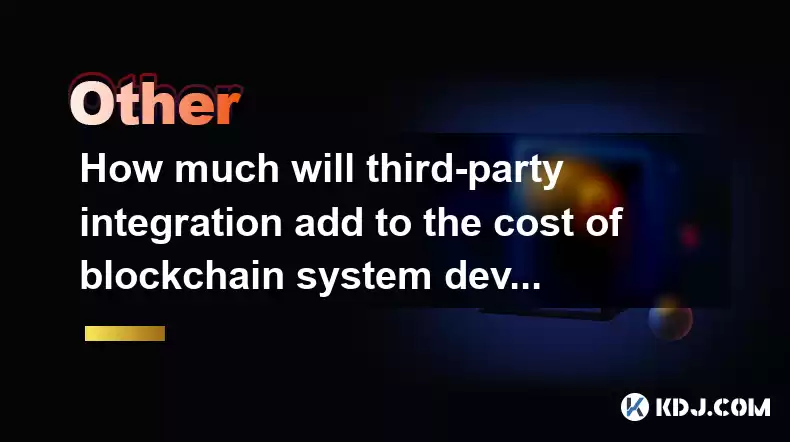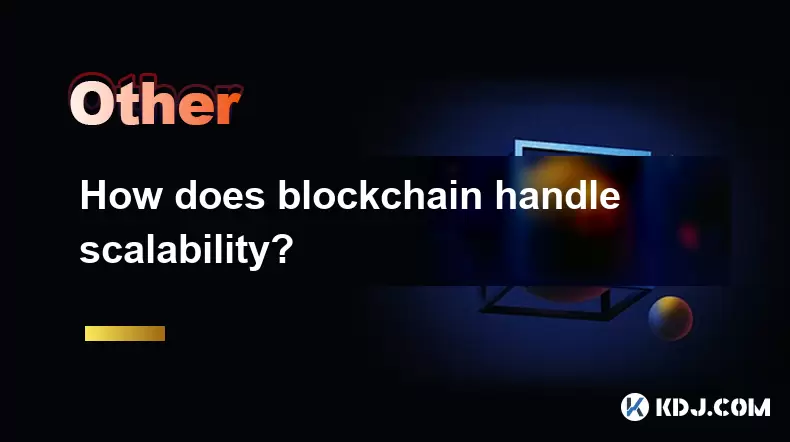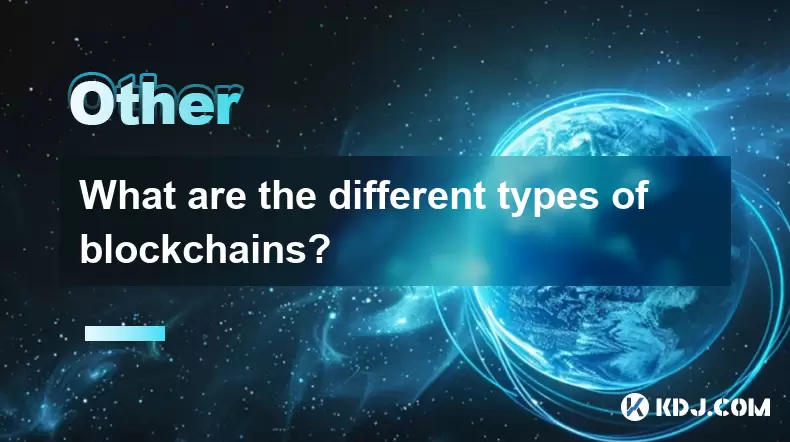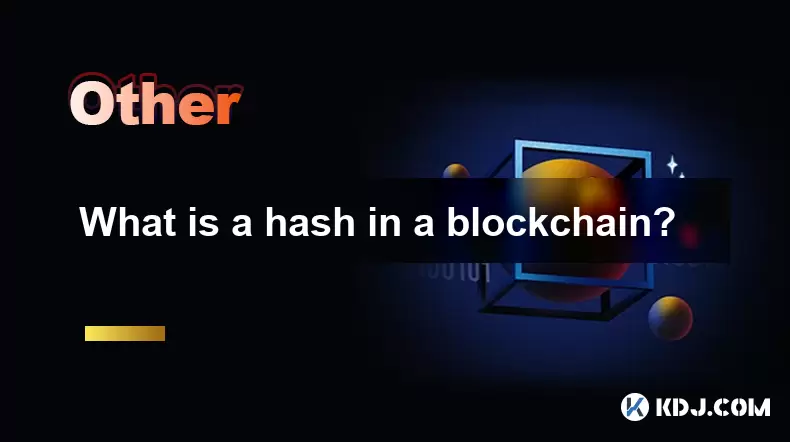-
 Bitcoin
Bitcoin $112400
-1.07% -
 Ethereum
Ethereum $3409
-3.27% -
 XRP
XRP $2.784
-6.60% -
 Tether USDt
Tether USDt $0.9997
-0.03% -
 BNB
BNB $739.3
-2.09% -
 Solana
Solana $158.0
-2.90% -
 USDC
USDC $0.9998
-0.02% -
 TRON
TRON $0.3213
-0.94% -
 Dogecoin
Dogecoin $0.1929
-5.01% -
 Cardano
Cardano $0.6974
-2.82% -
 Hyperliquid
Hyperliquid $36.69
-2.31% -
 Sui
Sui $3.327
-4.80% -
 Stellar
Stellar $0.3672
-5.18% -
 Chainlink
Chainlink $15.65
-3.07% -
 Bitcoin Cash
Bitcoin Cash $525.0
-1.68% -
 Hedera
Hedera $0.2291
-6.00% -
 Avalanche
Avalanche $20.91
-2.96% -
 Ethena USDe
Ethena USDe $1.000
0.00% -
 Toncoin
Toncoin $3.520
-1.12% -
 UNUS SED LEO
UNUS SED LEO $8.968
0.14% -
 Litecoin
Litecoin $105.7
0.26% -
 Shiba Inu
Shiba Inu $0.00001181
-1.79% -
 Polkadot
Polkadot $3.492
-2.08% -
 Uniswap
Uniswap $8.800
-3.10% -
 Dai
Dai $0.9999
-0.01% -
 Monero
Monero $289.9
-3.17% -
 Bitget Token
Bitget Token $4.243
-1.27% -
 Pepe
Pepe $0.00001006
-3.67% -
 Cronos
Cronos $0.1248
-5.68% -
 Aave
Aave $249.7
-2.50%
How much will third-party integration add to the cost of blockchain system development?
Third-party integrations like payment gateways and identity verification services add significant costs to blockchain system development, impacting both initial setup and ongoing expenses.
Apr 15, 2025 at 12:35 pm

The development of a blockchain system is a complex process that involves various stages and components. One significant aspect to consider is the integration of third-party services, which can significantly impact the overall cost. Understanding how much third-party integration adds to the cost of blockchain system development requires a detailed examination of the types of integrations, their necessity, and the associated expenses.
Types of Third-Party Integrations
Third-party integrations in blockchain systems can range from payment gateways and identity verification services to data analytics tools and cloud storage solutions. Each type of integration serves a specific purpose and adds a layer of functionality to the blockchain system.
- Payment Gateways: Integrating payment gateways such as PayPal or Stripe allows users to make transactions within the blockchain system more easily. This integration can enhance user experience but comes with transaction fees and potential setup costs.
- Identity Verification Services: Services like KYC (Know Your Customer) and AML (Anti-Money Laundering) are crucial for compliance in many blockchain applications. These services ensure that users are verified, but they often require subscription fees and integration costs.
- Data Analytics Tools: Tools like Google Analytics or custom analytics platforms can provide valuable insights into user behavior and system performance. These integrations might involve API costs and development time for proper implementation.
- Cloud Storage Solutions: Services like Amazon S3 or Google Cloud Storage can be used to store blockchain data off-chain, reducing the load on the blockchain itself. These services typically come with storage fees and integration costs.
Necessity of Third-Party Integrations
The necessity of third-party integrations depends on the specific requirements and goals of the blockchain system. Some integrations are essential for the system to function properly, while others are optional and can enhance the system's capabilities.
- Essential Integrations: For instance, a blockchain system designed for financial transactions would require a payment gateway and identity verification services to ensure security and compliance. These integrations are non-negotiable and directly impact the system's core functionality.
- Optional Integrations: Data analytics tools and cloud storage solutions might not be essential for the system's basic operation but can significantly improve its efficiency and user experience. These integrations can be considered based on the project's budget and strategic goals.
Cost Factors of Third-Party Integrations
Several factors influence the cost of integrating third-party services into a blockchain system. Understanding these factors is crucial for accurately estimating the overall development budget.
- API and Subscription Fees: Many third-party services charge fees for using their APIs or subscribing to their platforms. These fees can be recurring and add up over time, affecting the long-term cost of the blockchain system.
- Development Time and Expertise: Integrating third-party services often requires specialized knowledge and development time. The complexity of the integration can vary, and more complex integrations might require hiring experienced developers, increasing the cost.
- Testing and Maintenance: After integration, thorough testing is necessary to ensure that the third-party service works seamlessly with the blockchain system. Ongoing maintenance and updates can also add to the cost, as they require continuous attention and resources.
Estimating the Cost of Third-Party Integrations
Estimating the cost of third-party integrations involves a detailed analysis of the specific services to be integrated and the associated expenses. Here's a step-by-step approach to estimating these costs:
- Identify Necessary Integrations: Start by listing all the third-party services that are essential for the blockchain system's operation. This includes payment gateways, identity verification services, and any other critical components.
- Research Service Providers: Research different service providers for each type of integration. Compare their features, pricing models, and compatibility with the blockchain system.
- Calculate API and Subscription Fees: Determine the recurring fees for using each service. Multiply these fees by the expected duration of the project to get an estimate of the long-term cost.
- Estimate Development Time: Assess the complexity of each integration and estimate the development time required. Factor in the hourly rates of the developers or the cost of hiring external experts.
- Include Testing and Maintenance Costs: Add a budget for testing the integrations and ongoing maintenance. This should cover the time and resources needed to ensure the system's stability and performance.
Case Study: Cost Analysis of a Blockchain Payment System
To illustrate the impact of third-party integrations on the cost of blockchain system development, consider a case study of a blockchain payment system. This system aims to facilitate secure and efficient transactions between users.
- Payment Gateway Integration: The system requires a payment gateway like Stripe to process transactions. The integration involves a setup fee of $500 and a transaction fee of 2.9% + $0.30 per transaction. Assuming an average of 10,000 transactions per month, the monthly transaction fee would be approximately $3,200.
- Identity Verification Service: The system also needs an identity verification service like Onfido to comply with KYC and AML regulations. The service charges a subscription fee of $200 per month and $2 per verification. Assuming 1,000 verifications per month, the monthly cost for identity verification would be $2,200.
- Data Analytics Tool: To monitor system performance, the system integrates Google Analytics, which is free but requires development time for proper implementation. The estimated development time for this integration is 40 hours at a rate of $50 per hour, totaling $2,000.
- Cloud Storage Solution: The system uses Amazon S3 for off-chain data storage, with a monthly cost of $100 for 1TB of storage.
Total Monthly Cost: Adding up the monthly costs of these integrations, the total comes to approximately $7,500. Additionally, the initial development and setup costs for these integrations are estimated at $3,000, bringing the total initial cost to $3,000 and the ongoing monthly cost to $7,500.
Frequently Asked Questions
Q: Can third-party integrations be avoided to reduce the cost of blockchain system development?
A: While some integrations are essential for the system's functionality and compliance, others are optional. Developers can prioritize essential integrations and consider optional ones based on the budget. However, avoiding necessary integrations can compromise the system's security and efficiency.
Q: How can the cost of third-party integrations be minimized?
A: To minimize costs, developers can choose cost-effective service providers, negotiate bulk discounts, and optimize the integration process to reduce development time. Regularly reviewing and adjusting the use of third-party services can also help control costs.
Q: What are the risks associated with third-party integrations in blockchain systems?
A: The risks include potential security vulnerabilities, dependency on third-party service availability, and increased complexity in system management. Thorough testing and continuous monitoring are essential to mitigate these risks.
Q: How does the scale of the blockchain system affect the cost of third-party integrations?
A: Larger systems with more users and transactions will incur higher costs for third-party integrations due to increased usage fees and the need for more robust solutions. Smaller systems might benefit from lower-tier service plans but still need to consider scalability for future growth.
Disclaimer:info@kdj.com
The information provided is not trading advice. kdj.com does not assume any responsibility for any investments made based on the information provided in this article. Cryptocurrencies are highly volatile and it is highly recommended that you invest with caution after thorough research!
If you believe that the content used on this website infringes your copyright, please contact us immediately (info@kdj.com) and we will delete it promptly.
- BlockDAG, SEI, Ethena: Top Crypto Performers Under the Microscope
- 2025-08-03 10:50:16
- Bitcoin Blasts Past $119K: How Institutional Adoption and Macro Shifts Fuel the Fire
- 2025-08-03 10:55:16
- Crypto, Grok, and August: Decoding the Latest Trends and Insights
- 2025-08-03 11:10:16
- Crypto, Phishing, and Your Wallet: A New Yorker's Guide to Staying Safe
- 2025-08-03 10:30:16
- Troller Cat Meme Coin Presale Soars: A New King in the Crypto Jungle?
- 2025-08-03 10:30:16
- Grayscale, Altcoin Trust, and Mid-Cap Mania: What's the Deal?
- 2025-08-03 08:50:16
Related knowledge

What is the difference between on-chain and off-chain transactions?
Aug 02,2025 at 04:22pm
Understanding On-Chain TransactionsOn-chain transactions refer to digital asset transfers that are recorded directly on a blockchain ledger. These tra...

What is the double-spending problem and how does blockchain prevent it?
Aug 02,2025 at 01:07pm
Understanding the Double-Spending ProblemThe double-spending problem is a fundamental challenge in digital currency systems where the same digital tok...

What is the difference between a blockchain and a database?
Aug 01,2025 at 09:36pm
Understanding the Core Structure of a BlockchainA blockchain is a decentralized digital ledger that records data in a series of immutable blocks linke...

How does blockchain handle scalability?
Aug 02,2025 at 02:58pm
Understanding Blockchain Scalability ChallengesBlockchain scalability refers to a network's ability to handle an increasing volume of transactions wit...

What are the different types of blockchains?
Aug 03,2025 at 03:01am
Public Blockchains: Open and Decentralized NetworksPublic blockchains are the most widely recognized type of blockchain, characterized by their open a...

What is a hash in a blockchain?
Aug 02,2025 at 05:28am
Understanding the Concept of Hash in BlockchainA hash in the context of blockchain technology refers to a unique digital fingerprint generated by a cr...

What is the difference between on-chain and off-chain transactions?
Aug 02,2025 at 04:22pm
Understanding On-Chain TransactionsOn-chain transactions refer to digital asset transfers that are recorded directly on a blockchain ledger. These tra...

What is the double-spending problem and how does blockchain prevent it?
Aug 02,2025 at 01:07pm
Understanding the Double-Spending ProblemThe double-spending problem is a fundamental challenge in digital currency systems where the same digital tok...

What is the difference between a blockchain and a database?
Aug 01,2025 at 09:36pm
Understanding the Core Structure of a BlockchainA blockchain is a decentralized digital ledger that records data in a series of immutable blocks linke...

How does blockchain handle scalability?
Aug 02,2025 at 02:58pm
Understanding Blockchain Scalability ChallengesBlockchain scalability refers to a network's ability to handle an increasing volume of transactions wit...

What are the different types of blockchains?
Aug 03,2025 at 03:01am
Public Blockchains: Open and Decentralized NetworksPublic blockchains are the most widely recognized type of blockchain, characterized by their open a...

What is a hash in a blockchain?
Aug 02,2025 at 05:28am
Understanding the Concept of Hash in BlockchainA hash in the context of blockchain technology refers to a unique digital fingerprint generated by a cr...
See all articles

























































































